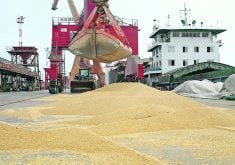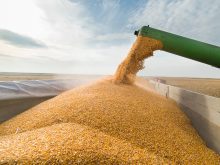Scorching winds are sucking the life out of many canola fields,
driving production prospects even lower than what had been forecast.
Saskatoon was Canada’s hot spot on July 5, hitting a record 37.7 C. The heat continued through the weekend.
With canola in the critical blooming stage, heat and no rain was not what the doctor ordered.
Canola traders are getting antsy.
Winnipeg futures prices that had been climbing steadily in late June took flight in the first week of July and appeared ready to soar this week.
Read Also

Flax sector sees omega-3 opportunity
SASKATOON — A global shortage of omega-3 oils could be an opportunity for the flax sector, says an industry official….
The expected battle for canola supply between domestic crushers and export customers might intensify as the crop gets smaller.
Forecasts of tight canola supply worldwide also have been revised to accommodate poorer-than-expected production in the European Union and Australia.
But the news of tightening canola availability has until now been offset by the huge soybean crops in the United States and South America.
The perception was that while canola prices could rally some, the soybean supply would act as a lid, preventing a real bull rally.
But now analysts are thinking that ocean of soybeans might not be as deep as first thought.
U.S. soybean area is still at a record, but the latest seeding survey puts it 1.24 million acres smaller than in the March survey and 1.5 million less than what analysts expected.
So far, soybean yield potential is average, but concerns were mounting early this week about dry spots.
On the other side of the coin, voracious demand, mainly from China, has cut deeply into supplies.
Despite the high American dollar and stout competition from South America, analysts think the U.S. could export a record one billion bushels of soybeans in the current crop year.
This has helped push down current year ending stocks to an estimated 270 million bushels.
Given smaller seeded acreage, yields that could be below average and continued strong exports, there is a good chance the entire 2001-02 crop could be consumed, leaving ending stocks again near the 270 million bu. mark.
This could lift soybean prices to a more attractive level and raise the ceiling for canola prices.
That’s good news for producers mainly on the eastern Prairies who expect a good canola crop.
But it is going to be a tough year for those without a crop and for markets that have come to rely on Canadian canola.














